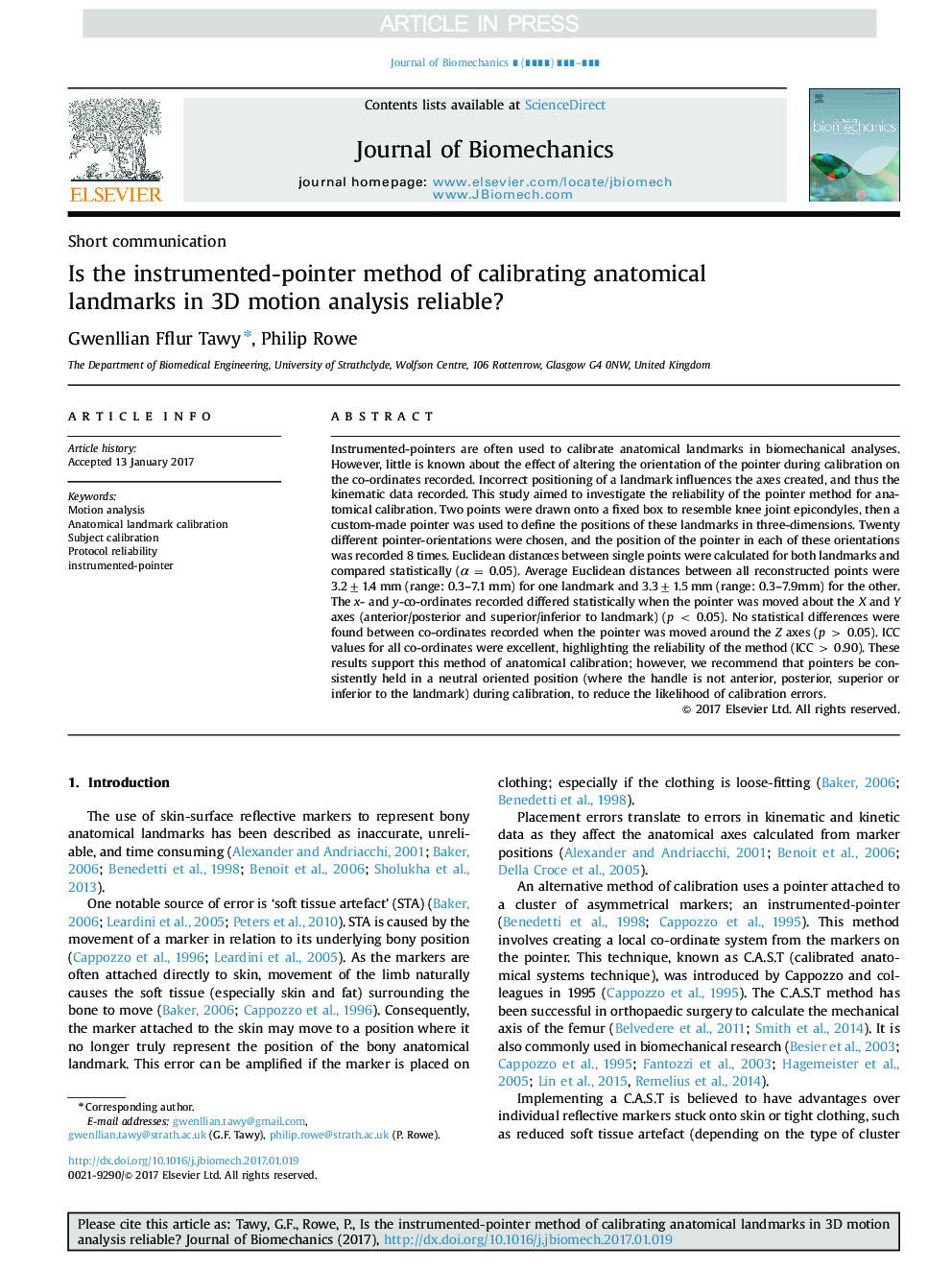| کد مقاله | کد نشریه | سال انتشار | مقاله انگلیسی | نسخه تمام متن |
|---|---|---|---|---|
| 5032214 | 1471111 | 2017 | 5 صفحه PDF | دانلود رایگان |
عنوان انگلیسی مقاله ISI
Is the instrumented-pointer method of calibrating anatomical landmarks in 3D motion analysis reliable?
ترجمه فارسی عنوان
آیا روش کالیبراسیون نشانگرهای آناتومی در تحلیل حرکت حرکتی سه بعدی با استفاده از ابزار اشاره گر قابل اعتماد است؟
دانلود مقاله + سفارش ترجمه
دانلود مقاله ISI انگلیسی
رایگان برای ایرانیان
کلمات کلیدی
تجزیه و تحلیل حرکت کالیبراسیون علامت آناتومیک، کالیبراسیون موضوع قابلیت اطمینان پروتکل، ابزار اشاره گر،
موضوعات مرتبط
مهندسی و علوم پایه
سایر رشته های مهندسی
مهندسی پزشکی
چکیده انگلیسی
Instrumented-pointers are often used to calibrate anatomical landmarks in biomechanical analyses. However, little is known about the effect of altering the orientation of the pointer during calibration on the co-ordinates recorded. Incorrect positioning of a landmark influences the axes created, and thus the kinematic data recorded. This study aimed to investigate the reliability of the pointer method for anatomical calibration. Two points were drawn onto a fixed box to resemble knee joint epicondyles, then a custom-made pointer was used to define the positions of these landmarks in three-dimensions. Twenty different pointer-orientations were chosen, and the position of the pointer in each of these orientations was recorded 8 times. Euclidean distances between single points were calculated for both landmarks and compared statistically (α = 0.05). Average Euclidean distances between all reconstructed points were 3.2±1.4 mm (range: 0.3-7.1 mm) for one landmark and 3.3±1.5 mm (range: 0.3-7.9mm) for the other. The x- and y-co-ordinates recorded differed statistically when the pointer was moved about the X and Y axes (anterior/posterior and superior/inferior to landmark) (p < 0.05). No statistical differences were found between co-ordinates recorded when the pointer was moved around the Z axes (p > 0.05). ICC values for all co-ordinates were excellent, highlighting the reliability of the method (ICC > 0.90). These results support this method of anatomical calibration; however, we recommend that pointers be consistently held in a neutral oriented position (where the handle is not anterior, posterior, superior or inferior to the landmark) during calibration, to reduce the likelihood of calibration errors.
ناشر
Database: Elsevier - ScienceDirect (ساینس دایرکت)
Journal: Journal of Biomechanics - Volume 53, 28 February 2017, Pages 205-209
Journal: Journal of Biomechanics - Volume 53, 28 February 2017, Pages 205-209
نویسندگان
Gwenllian Fflur Tawy, Philip Rowe,
